- Critical experimental work on effect of ceramic tile waste in concrete as a substitute to aggregates
Suchithra Shanmughana, Santhosh Kumaar Kaliyannanb, Sowmiya Marasamyc and Pavithran Thiyagarajand
aAssociate Professor, Department of Civil Engineering, Kongu Engineering College, Erode, Tamil Nadu, India -638060
bAssistant Professor, Department of Civil Engineering, Kongu Engineering College, Erode, Tamil Nadu, India -638060
cPG Student, Department of Civil Engineering, Kongu Engineering College, Erode, Tamil Nadu, India -638060
dPG Student, Department of Civil Engineering, Kongu Engineering College, Erode, Tamil Nadu, India -638060This article is an open access article distributed under the terms of the Creative Commons Attribution Non-Commercial License (http://creativecommons.org/licenses/by-nc/4.0) which permits unrestricted non-commercial use, distribution, and reproduction in any medium, provided the original work is properly cited.
The use of waste materials such as ceramics as a building material alternative is gaining popularity these days. While some other ceramic product wastes, like sanitary wares and electrical insulators, have received substantial research, ceramic wall and floor tile wastes have received less attention. As a consequence, the focus of the research is on the mechanical characterisation of aggregate concrete made from waste ceramic wall and floor tiles. Ceramic wastes were collected from building and demolition sites and reduced to required size using a quarry metal hammer. According to industry standards, ceramic tiles were sieved into fine and coarse particles. Slump test was order to evaluate the fresh concrete workability. The impact of ceramic tile waste on the mechanical and micro level characteristics in concrete is the focus of this study. Concrete utilising ceramic waste as a substitute for cement and aggregate was found to have better mechanical properties. It was discovered that the usage of ceramic waste in the building industry not only lowers the construction materials cost, but also aids in the attainment of sustainability
Keywords: Ceramic tile waste, Coarse aggregate, Fresh concrete properties, Material properties, Mechanical properties
The rapid growth of human population and the development of civilization plays a strain on natural resources. The construction sector makes life simpler at present and improves the quality of life globally. Nonetheless, this industry's massive use of natural resources degrades the globe system; consumed natural resources which accounts for 75% of total consumption [1]. For a long time, ceramic has been utilised all over the world [2]. Ceramic tile waste is more important building resource that may be found in almost any structure [3]. On a worldwide scale, India has one of the fastest-growing ceramic tile markets. Nearly 8% to 10% of the raw material used in the manufacture of ceramic products is wasted in India [4, 5]. These ceramic tile wastes end up in landfills, polluting the soil, air, and water supply [6-11]. They're generally made out of natural materials with a lot of clay minerals [12, 13]. Kaolin, betonites, sand, feldspar, and glass are the basic ingredients required to make ceramic tiles [14-18]. They were frequently used for in prosing scratch resistance; they are also environmental friendly, and gives durability [19-25]. Natural materials heated to temperatures ranging between 200 to 2000 oC, and the possibility of pozzolanic reaction in ceramic materials really gives them their long-term strength and durability avoiding the use of hazardous chemicals [26-29]. Tennis courts, pathways, cycling lanes, and parks use the tiles as flooring materials. This includes some of application of ceramic concrete [30-32]. Due to their low cost, ceramic tile waste is thrown in production sites itself [33]. About 2,50,000 tonnes of tiles are produced each year, with 100 million utilised only for repairs. To save money and safeguard the environment, the leftover items may be recycled [34-36]. As previously stated, ceramic industry waste accounts for around 30% of total daily production. Because of accumulaton of ceramic tile waste every day, the ceramic industries are required to find a solution for its disposal [37]. The use of replacement materials saves money, saves energy, produces arguably superior goods, and reduces serious environmental risks [38]. The aim of this research paper is to study the characteristics of concrete made from ceramic tile waste as a partial alternative for aggregates. Figure 1 displays the material characteristics used in this study. The range of percentage of silicon di oxide is wide for different grades of cement as this percentage directly implies on the CSH gel formation, which in turn improves the strength of the concrete samples.
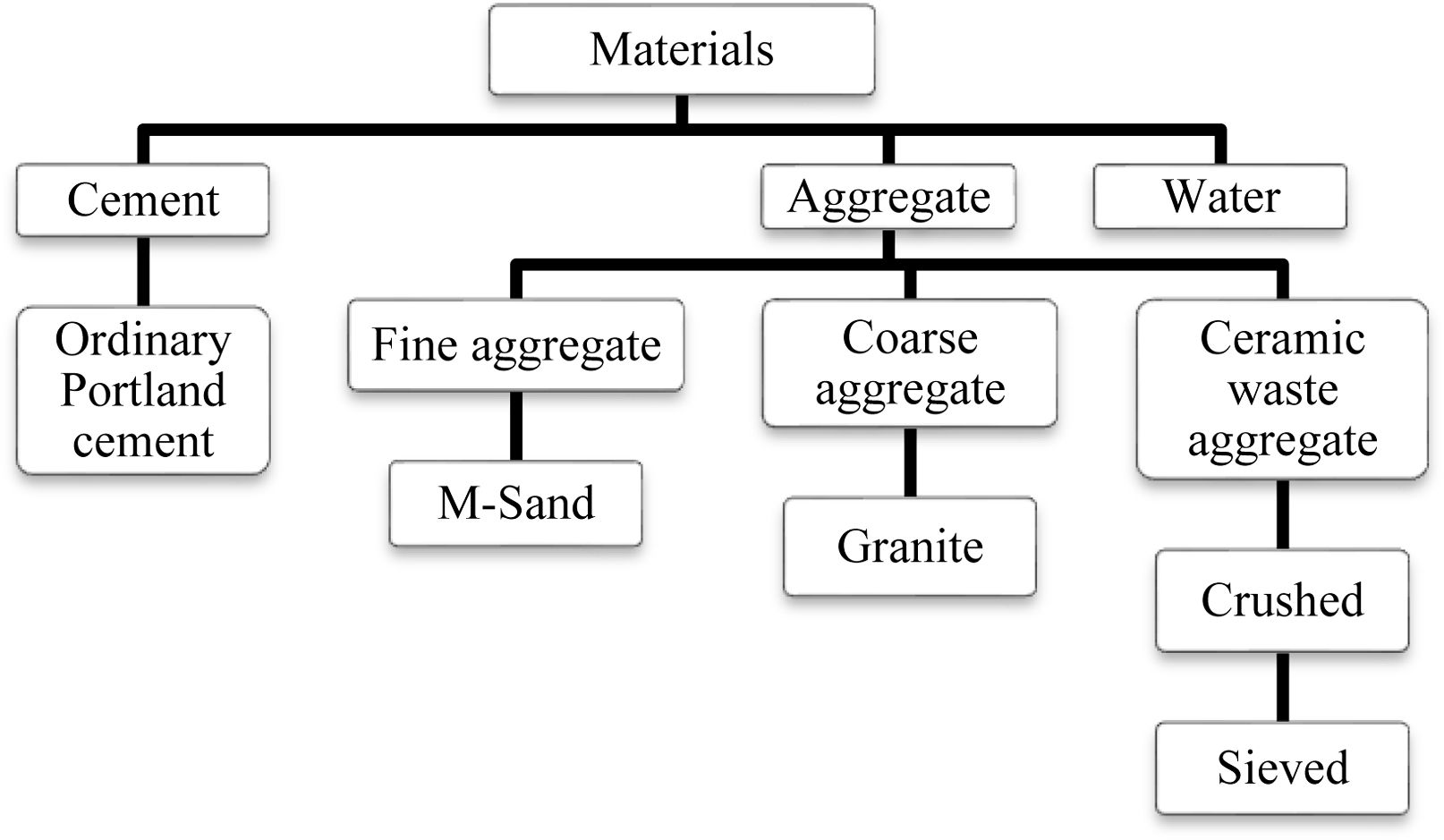
|
Fig. 1 Material Characteristics. |
Cement
Table 1 present chemical characteristics of 53 grade cement used in different studies by researchers. Minor components found to be more or less same in percentage, while the calcium oxide and silicon dioxide found to be in varying compositions.
Aggregate
Fine Aggregate
In concrete, fine aggregate accounts for 60 to 70% of the total concrete volume [62]. Fine aggregate consists primarily of natural sand or crushed stone particles that are less than 5 mm in diameter [63, 64]. Table 2 represent particle size of fine aggregate by different researches. The fine aggregate in this table ranges from 0.075 mm to 4.75 mm in size. The various studies gives an idea of replacements upto 100%
Coarse Aggregate
It is the most important component of concrete, as it gives concrete volume. shattered stone or gravel with the largest particle smaller than 20 mm is used to make coarse aggregate [65]. Specific gravity, water content, impact strength and abrasive value, are the characteristics of coarse aggregate [53]. The minimum size of coarse aggregate used for the study is 4 mm, and the maximum size is 20 mm. Table 2 displays the particle size of coarse aggregate used for various research studies. The research papers taken for study shows a replacement from 25% to 75% for coarse aggregate. Aggregate shape is not considered here as it mainly affects the w/c ratio only. The ceramic waste samples are chose in such a way that they are similar to coarse aggregates in shape.
Ceramic Waste Aggregate
According to the sources of the chemicals in their natural condition, ceramic waste can be divided into two groups. Ceramic wastes are white paste and red paste. The white paste is used in sanitary wares, porous stoneware tiles and China stone tiles. The red pastes are used in bricks, blocks, roof tiles and porous stone tiles. The burned tiles are used to manufacture structural ceramics, which after burning can be made red pastes to make concrete, stones, and roof tiles. Ceramic tile debris is used to substitute coarse aggregate partially. Tiles and other ceramic trash are crushed into small pieces ranging from 4.75 to 20 mm sizes [22, 35, 52-54, 56, 62, 66-69]. Figure 2 depicts the classification of ceramic tile waste. Whereas Fig. 3a shows the debris from a demolition site [12]. Figure 3b shows the ceramic tile waste –4.75 mm to 20 mm in size [70].
Properties of Ceramic Tile Waste
Ceramic tile, a very old manufactured commodity, can still be found in some of today's most advanced and sophisticated applications. Ceramic tiles are of various sizes and shapes, with size ranging from a few centimeter to meter or more over, and thickness varying from 5 mm to 25 mm [12, 26, 79-81]. Compared to natural coarse aggregates, recycled coarse aggregates takes more water [82]. This feature, it was said, is the most significant impediment for using this sort of aggregate in concrete production without comprimizing mechanical strength, workability, or durability. Concrete can be made with recycled ceramic aggregate without sacrificing mechanical efficiency, workability or toughness [82, 83]. Ceramics have traditionally been the most cost-effective material for high-temperature filtration and applications [92, 93]. Table 3 shows the mineral composition of ceramic tile waste[27, 84, 85] whereas Table 4 shows the chemical composition of ceramic tile wastes which in taken from various studies by researchers [92, 93]. Silicon dioxide (SiO2) and Aluminum Oxide are the two basic chemical ingredients in ceramic tile (Al2O3). In addition, iron oxyhydroxides (Fe2O3), calcium oxyhydroxides (CaO), potassium oxyhydroxides (K2O), sodium oxyhydroxides (Na2O), and zirconium oxyhydroxide (ZrO2). Ceramic wares are made from a variety of natural minerals as raw materials. Quartz, Feldspar, Zircon, Talc, Aluminium oxide, Sodium trypoly phosphate China clay, Bikaner clay, and other minerals are used in the production of ceramic tiles. From the literatures it can be studied that the percentage of mineral composition depends on the sourse of raw materials collection sites.
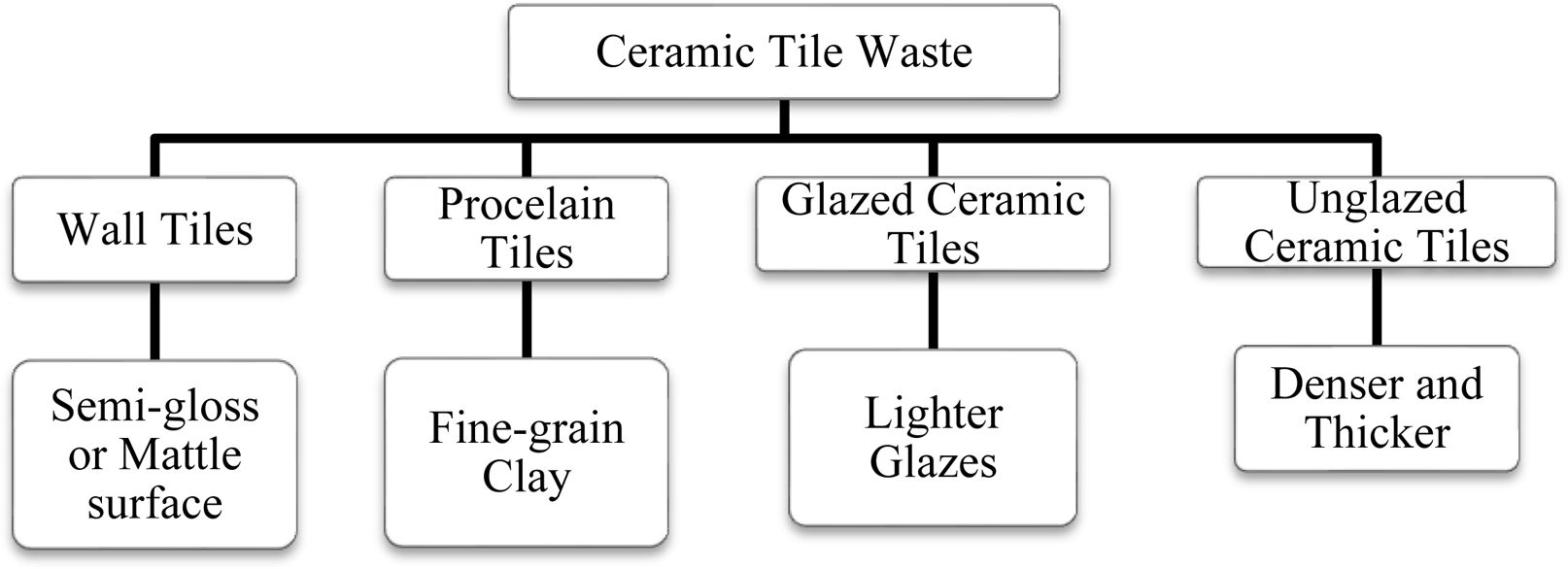
|
Fig. 2 Classification of Ceramic Tile Waste |
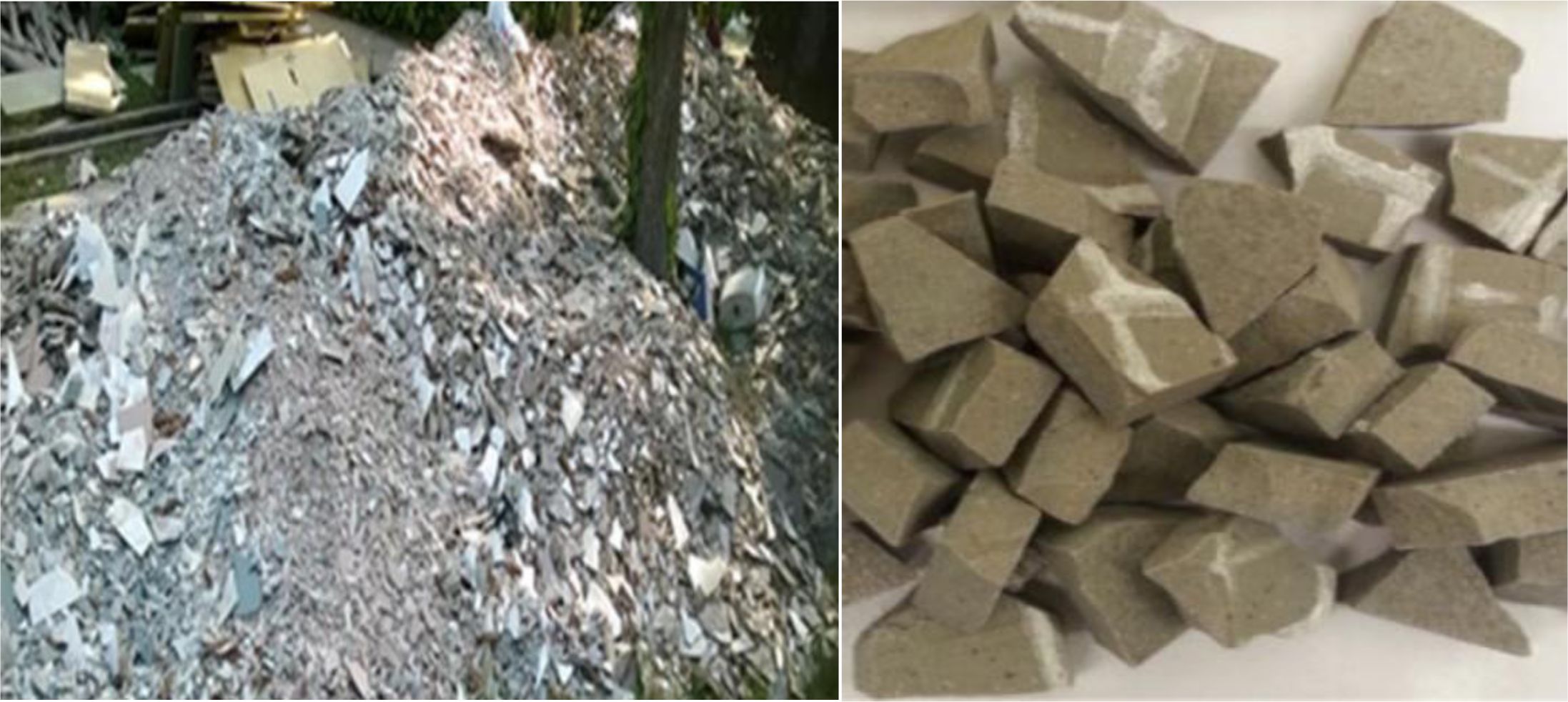
|
Fig. 3 (a) Demolition of ceramic wall tiles [12]. (b) Ceramic tile waste –4.75 to 20 mm [70]. |
Workability
According to UNE EN 12350-2:2009, a European standard, the slump cone test was performed to assess the workability on the job site [49, 54]. Table 5 depicts the fresh concrete result obtained for various studies carried out by different researchers. The slump cone test is universally accepted workability field test, hence considered for this particular study. As the quantity of ceramic paste in concrete grows, the workability decreases, and compressive strength improves. Workability reduces as the quantity of ceramic waste used as coarse aggregate increases in concrete. Further, as compared to natural coarse aggregate, recovered ceramic wastes have a larger water absorption capacity. As a result, the workability of concrete has decreased.
As a small experimental test, 15% replacement for coarse aggregate had been done in M30 grade of concrete and the results were tried to compare with the various literature results.
Compressive Strength
The cube compressive strength tests were carried out in accordance with IS 516-1959 [81, 89].The compressive strength test studies taken by various scientists are discussed in Table 6. The replaced materials lowered compressive strength by more than 20%. This might be due to non-hydraulic binding materials replaced with hydraulic binding materials [9]. The hydraulic binding materials are finer particles which help in later stage of strength development and here it is not considered. The compressive strength of the GI series gradually decreases over 28-days curing period as the rate of replacement has been increased. Furthermore, in comparison to river sand specimens, the elastic modulus of ceramic waste aggregate specimens is quite high as electrical insulators; the ceramic waste aggregate specimens found to be better electrical insulators than the natural sand specimens [81]. The compressive strength was assessed after 7-days and 28-days curing cycle. Ceramic tile waste was also employed as a filler at 0%, 10%, 20%, 30%, and 40% of the total volume of coarse aggregate. The addition of ceramic tile on the cube power of the mortar has been determined using different water cement ratios. When utilised as a 100 percent equivalent for asphalt, porcelain tile waste enhanced concrete compression strength by up to 41%, while roofing tiles increased it by 29%. Because porcelain has a higher density, it out performs red roof tile waste in terms of enhancing the concrete’s compressive strength [88]. Other published values [9, 52, 81, 88] including partially different ceramic wastes are compatible with these strength of compression results. The experimental results also show a positive sign.
Split Tensile Strength
Because of its low tensile strength, concrete splits easily [6, 54]. The strength of split tensile depends on consistency of the paste [35]. IS 5816:1999 was used to test the split tensile strength. Split tensile strength studies conducted by various researches are enlisted in Table 7. When the coarse aggregate was replaced with reusable coarse aggregate (at 0, 10, 30, 50, and 75 percentage), strength of split tensile depleted at a reduced pace, with the greatest reduction of 6.4 percent recorded when compared to the control mix. The largest reduction found for 75% replacement was 22.2% [54]. It was observed that replacing ceramic coarse aggregate for natural coarse aggregate resulted in a 40 percent increase in the percentage of natural coarse aggregate used [59]. The strength of spilt tensile is made up of concrete with coarse aggregate waste from tiles waste with varying proportion of 0%, 20%, 40%, 60%, 80%, and 100% is carried out. As a result of increasing the ceramic tile from 0-100%, the split tensile strength value has increased and the final tensile strength improvement was found to be 41%. The cohesiveness of the porcelain components in ceramic pieces and the cement paste have a close link, replacing natural aggregates in concrete with porcelain tile waste, which boosts tensile strength [24]. The split tensile strength of concrete was observed after 28 days with coarse aggregate replacement utilising waste ceramic aggregate in proportions of 20%, 25%, 35%, 50%, 65%, 80%, and 100%. Tile substitution series beat the reference concrete, especially at less replacement ratios. Despite increased variability, the tensile strength of the drenched marble pieces and fine replacement sequences remain stable [70]. When reusable coarse aggregate was utilised instead of natural coarse aggregate, the split tensile strength when determined after 56 days of curing (20%, 50%, and 100%), the compressive strength results identical to those acquired by other researchers, and the results for which mixes are better than those reported by other scientists. Testing results shows that mixes including reused sanitary ware particles had much lower strength of splitting tensile than standard concrete [82]. Other published values [24, 54, 59, 70, 82] including partially different ceramic wastes are compatible with the split tensile strength results. Our experimental result gave a satisfying 11% improvement in result.
Flexural Strength Test
Concrete pavements subjected to wheel loads are built using the flexural strength qualities of the material, where insufficient subgrade support generates bending moment and tensile strains are caused by volume changes caused by heating or shrinking [91]. The flexural strength of concrete studied by various scientist are discussed in Table 8. The drenched ceramic tiles & fine replaced model outperformed the 50-percentage replacement base tile samples. Flexural strength testing is less efficient than compression and tensile tests [70]. The flexural strength of concrete at 28 days demonstrated that the strength of recycled ceramic aggregate had decreased (0%, 5%, 10%, and 15%). The strength was increased in 15% [90]. The strength of flexural of the concrete was examined for 28 days, and it was observed that using RCA instead of NCA resulted in a drop in flexural of strength. The 75 percent substitution of ceramic, the research indicates just a 5.8% reduction in flexural intensity [54]. Other published values [54, 70, 90] including partially different ceramic wastes are compatible with this strength of flexural values. The 15% cosrse aggregate substitute experimental result showed a 54.8% increase.
Micro Structure Analysis-Scanning Electron Microscopy
Figure 4 shows two Scanning Electron Microscopy images of (a) conventional concrete sample and (b) ceramic tile coarse aggregate with concrete mortar sample. Specimens with ceramic tiles in place of coarse aggregate with 15% replacement were examined at 7 days of curing. The compressive strength value was 31.63 N/mm2. The strength of compression was increased, and ceramic tile waste aggregate has been used because of its more irregular form, which provided a higher specific surface area than natural aggregate. Further, the uneven form allows for a stronger connection between ceramic tile waste aggregate and concrete mortar. Moreover, due to its chemical properties and particle sizes, the ceramic tile waste aggregate had little pozzolanic activity in the surface part of the aggregate, resulting in absorbed water such as calcium silicate hydrates and calcium aluminate hydrates, which have less porous, more compact structure, forming a more stable aggregate transition zone. The microanalysis, which offers precise information on the structure and composition of the aggregates and concrete mortar, helped this study also to get micro structure of the materials. The natural aggregate had a siliceous appearance, but the ceramic aggregate had two distinct features, one internal and the other exterior. Chemical constituents such as Silica, Calcium, Magnesia, Calcium Oxide, and Iron Oxide, as well as a smaller fraction of Zirconium, were found in the interior region, which is a particular characteristic of ceramic material. The exterior features showed a similar features as of natural aggregates.
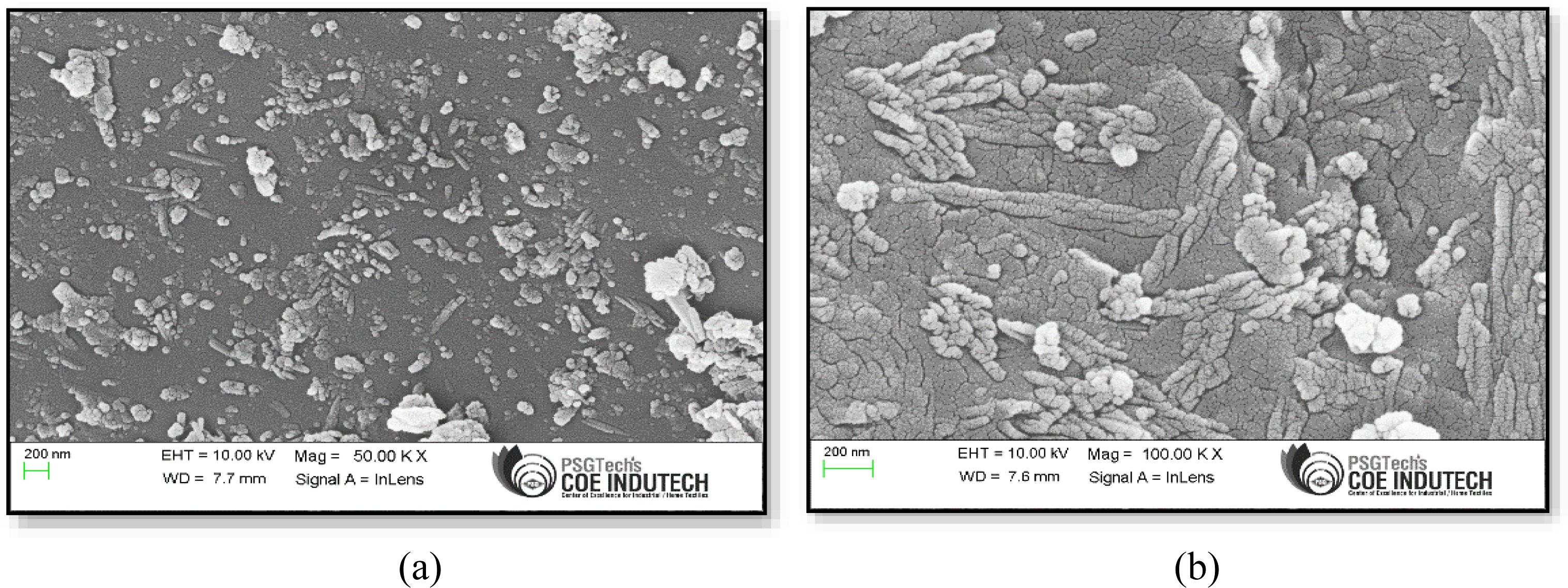
|
Fig. 4 Scanning Electronic Microscopy image of (a) Reference sample. (b) coarse aggregate and concrete mortar using microanalysis. |
Instead of natural coarse aggregate, waste of ceramic tile was used in concrete has been the subject of this article and the following conclusions were made from this study.
It was discovered that the concrete with ceramic tiles that had been largely replaced as coarse aggregate has good workability even though the water requirements are more. The early strength gain details of this study were not conducted and on targeted strength were considered.
Many researchers have observed a lack of compressive strength at a younger age. Here, with 15% replacement, 59% improvement in strength was visible. With increasing age, however, increased strength was reported. Number of authors employed ceramic tile waste as coarse and fine aggregate, substitute in percentages ranging from 5 to 100 percent. The drop in pressure might be due to the reduced pozzolanic behaviour at the starting stage.
The 15% replacement gives 59% improvement, but the tensile strength improvement is 11% as the bond strength in tensile load seems to be low, may be due to ordinary curing techniques followed for this work.
Concrete of grade M30 produced a better concrete of strength (11% increase) of split tensile and strength of flexural (54.8% improvement) than other mix. But up to 15% of ceramic coarse aggregate was able to used.
Flexural strength of ceramic tile aggregate is very much in straighter path compared to the conventional grade of concrete.
The authors declare that they have no known conflicting financial interests or personal ties that may have influenced the work presented in this study.
- 1. A. S. Nascimento, C.P. Dos Santos, F.M.C De Melo, V.G.A. Oliveira, R.M.P.B. Oliveira, Z.S. Macedo, and H.A. Oliveira, J. Clean. Prod. 265 (2020) 121808.
-

- 2. C.F. Speight and J. Toki, Hands in clay. McGraw-Hill Humanities/Social Science/Languages, (2003).
- 3. N. Azmi, F. Khalid, J. Irwan, N. Anting, and P. Mazenan, IOP Conf. Ser.: Mater. Sci. Eng. 271 (2017) 012081.
-

- 4. L. Ferrara, P. Deegan, A. Pattarini, M. Sonebi, and S. Taylor, J. Sustain. Cem. -Based Mater. 8 (2019) 145-160.
-

- 5. C. Medina, P.F.G. Banfill, M.S. de Rojas, and M. Frias, Constr. Build. Mater. 40 (2013) 822-831.
-

- 6. L. Gautam, J.K. Jaon, P. Kalla, and S. Choudhary, Mater. Today: Proc. 43 (2020) 1884-1891.
-

- 7. M. Samadi, G.F. Huseien, H. Mohammadhosseini, H.S. Lee, N.H.A.S. Lim, M.M. Tahir, and R. Alyousef, J. Clean. Prod. 266 (2020) 121825.
-

- 8. L. Li, G. Cao, R. Zhao, S. Wu, L. Wang, X. Li, and S. Zeng, Constr. Build. Mater. 265 (2020) 120512.
-

- 9. A.S. El-Dieb and D.M. Kanaan, SM&T. 17 (2018) e00063.
-

- 10. L. Fiala, P. Konrad, J. Fort, M. Keppert, and R. Cerny, J. Clean. Prod. 261 (2020) 121185.
-

- 11. A. Azevedo, D. Cecchin, D. Carmo, F. Silva, C. Campos, T. Shtrucka, M. Marvila, and S. Monteiro, J. Mater. Res. Technol. 9 (2020) 5942-5952.
-

- 12. P.O. Awoyera, J.M. Ndambuki, J.O. Akinmusuru, and D.O. Omole, HBRC J. 14 (2018) 282-287.
-

- 13. A. Halicka, P. Ogrodnik, and B. Zegardlo, Constr. Build. Mater. 48 (2013) 295-305.
-

- 14. K. Srinivas, S.K. Vijaya, and K. Jagadeeswari, Mater. Today: Proc. 37 (2021) 2089-2092.
-

- 15. C. Zhang, X. Wang, H. Zhu, Q. Wu, Z. Gu, Z. Feng, and Z. Jia, Ceram. Int. 46 (2020) 23623-23628.
-

- 16. S.S. Hossain, V. Ranjan, R. Pyare, and P. Roy, Constr. Build. Mater. 209 (2019) 315-325.
-

- 17. M. Tarhan, B. Tarhan, and T. Aydin, Ceram. Int. 42 (2016) 17110-17115.
-

- 18. P.S. Oliveira, M.L.P. Antunes, N.C. da Cruz, E.C. Rangel, A.R.G. de Azevedo, and S.F. Durrant, J. Clean. Prod. 274 (2020) 122948.
-

- 19. O. Mahmoodi, H. Siad, M. Lachemi, S. Dadsetan, and M. Sahmaran, Constr. Build. Mater. 258 (2020) 120297.
-

- 20. A. Heidari and D. Tavakoli, Constr. Build. Mater. 38 (2013) 255-264.
-

- 21. I.M. El-Kattan, M. Abdelzaher, and A. Farghali, J. Mater. Res. Technol. 9 (2020) 9395-9402.
-

- 22. M. Amin, B.A. Tayeh, and I.S. Agwa, J. Clean. Prod. 273 (2020) 123073.
-

- 23. S. Siddeique, S. Chaudhary, S. Shrivasstava, and T. Gupta, J. Clean. Prod. 210 (2019) 246-255.
-

- 24. Z. Keshavarz and D. Mostofinejad, Constr. Build. Mater. 195 (2019) 218-230.
-

- 25. R. Senthamarai and P.D. Manoharan, Cem. Concr. Compos. 27 (2005) 910-913.
-

- 26. B.P. Bohn, C. Von Muhlen, M.F. Pedrotti, and A. Zimmer, Clean. Eng. Technol. 2 (2021) 100043.
-

- 27. G.F. Huseien, A.R.M. Sam, K.W. Shah, and J. Mirza, Constr. Build. Mater. 236 (2020) 117574.
-

- 28. L.A. Pereira-de-Oliveira, J.P. Castro-Gomes, and P.M. Santos, Constr. Build. mater. 31 (2012) 197-203.
-

- 29. R. Ji, Z. Zhang, Y. He, L. Liu, and X. Wang, Synthesis, Constr. Build. Mater. 85 (2015) 119-126.
-

- 30. C. Zanelli, S. Conte, C. Molinari, R. Soldati, and M. Dondi, Resour. Conserv. Recycl. 168 (2020) 105289.
-

- 31. J. Zhao. C. Yan, S. Liu, J. Zhang, S. Li, and Y. Yan, J. Clean. Prod. 268 (2020) 122329.
-

- 32. C.S.G. Penteado, E.V. de Carvalho, and R.C.C. Lintz, J. Clean. Prod. 112 (2016) 514-520.
-

- 33. L. Li, W. Liu, Q. You, M. Chen, and Q. Zeng, J. Clean. Prod. 259 (2020) 120853.
-

- 34. P.R. Monich, A.R. Romero, E. Rambaldi, and E. Bernardo, Constr. Build. Mater. 261 (2020) 119971.
-

- 35. K. Rashid, A. Razzaq, M. Ahmad, T. Rashid, and S. Tariq, Constr. Build. Mater. 154 (2017) 829-840.
-

- 36. L. Reig, M. Sanz, M. Borrachero, J. Monzo, L. Soriano, and J. Paya, Ceram. Int. 43 (2017) 13622-13634.
-

- 37. G.C. de Souza-Dal Bo, M. Dal Bo, and A.M. Bernardin, Mater. Chem. Phys. 257 (2021) 123847.
-

- 38. A. Azevedo, C. Vieira, W. Ferrerira, K. Faria, L. Pedroti, and B. Mendes, J. Build Eng. 29 (2020) 101156.
-

- 39. R. Chitra, Indian J. of Sci and Technol. 8 (2015) 32.
-

- 40. N. Hilal and M. Hadzima-Nyarko, Environ. Sci. Pollut. Res. 28 (2021) 53282-53297.
-

- 41. H. Mohanmmadhosseini, N.H.A.S. Lim, M.M. Tahir, R. Alyousef, H. Alabduljabbar, and M. Samadi, Constr. Build. Mater. 212 (2019) 607-617.
-

- 42. M. Mohit, A. Ranjbar, and Y. Sharifi, Constr. Build. Mater. 271 (2021) 121565.
-

- 43. Y.Ogawa, P.T. Bui, K. Kawai, and R. Sato, Constr. Build. Mater. 236 (2020) 117462.
-

- 44. S. Subasi, H. Ozturk, and M. Emiroglu, Constr. Build. Mater. 149 (2017) 567-574.
-

- 45. P. Torkittikul and A. Chaipanich, Cem. Concr. Compos. 32 (2017) 440-449.
-

- 46. E. Vejmelkova, M. Keppert, P. Rovanikova, M. Ondracek, Z. Kersner, and R. Cerny, Cem. Concr. Compos. 34 (2012) 55-61.
-

- 47. D. Wattanasiriwech, A. Saiton, and S. Wattanasiriwech, J. Clean. Prod. 17 (2009) 1663-1668.
-

- 48. V.K. Atkuri and G.R. Rao, IOP Conf. Ser: Mater. Sci. Eng. 1025 (2021) 012017.
-

- 49. M.C. Bignozzi and A. Sccani, Cem. Concr. Compos. 34 (2012) 1141-1148.
-

- 50. J. Bommisetty, T.S. Keertan, A. Ravitheja, and K. Mahendra, Mater. Today: Proc. 19 (2019) 875-877.
-

- 51. H. Higashiyama, K. Yamachi, M. Sappakittipakarn, M. Sano, and O. Takahashi, Constr. Build. Mater. 40 (2013) 1021-1028.
-

- 52. A. Juan-Valdes, D. Rodriguez-Robles, J. Garcia-Gonzalez, M.I. Guerra-Romero, and J.M. Moran-del Pozo, J. Clean. Prod. 180 (2018) 482-493.
-

- 53. C. Medina, M. Frias, and M.S. De Rojas, Constr. Build. Mater. 31 (2012) 112-118.
-

- 54. M.C. Nepomuceno, R.A. Isidoro, and J.P. Catarino, Constr. Build. Mater. 165 (2018) 284-294.
-

- 55. R. Piyaphanuwat and S. Asavapisit, International J. Environ. Sci. Dev. 8 (2017) 342.
-

- 56. R. Senthamarai, P.D. Manoharan, and D. Gobinath, Constr. Build. Mater. 25 (2011) 2414-2419.
-

- 57. H.T. Tadesse, IOP Conf. Ser.: Mater. Sci. Eng. 993 (2020) 012123.
-

- 58. N. Yahya, S. Razak, M. Othman, S. Noor, K. Muhamad, and M. Jaih, IOP Conf. Ser.: Mater. Sci. Eng. 743 (2020) 012033.
-

- 59. S.A. Zarrei, F. Ameri, N. Bahrami, P. Shoaei, H.R. Musaeei, and F. Nurian, J. Build. Eng. 26 (2019) 100914.
-

- 60. S.A. Zareei, F. Ameri, P. Shoaei, and N. Bahrami, Constr. Build. Mater. 201 (2019) 11-32.
-

- 61. B. Zegardlo, M. Szelag, and P. Ogrodnik, Constr. Build. Mater. 122 (2016) 736-742.
-

- 62. J. Jimenez, J. Ayuso, M. Lopez, J. Fernandez, and J. De Brito, Constr. Build. Mater. 40 (2013) 679-690.
-

- 63. Y. Cheng, F. Huang, G.I. Li, L. Xu, and J. Hou, Constr. Build. Mater. 55 (2014) 440-446.
-

- 64. P. Awoyera, J. Akinmusuru, A. Dawson, J. Ndambuki, and N. Thom, Cem. Concr. Compos. 86 (2018) 224-237.
-

- 65. D.M. Kannan, S.H. Aboubakr, A.S. El-Dieb, and M.M. R. Taha, Constr. Build. Mater. 144 (2017) 35-41.
-

- 66. R. Silvestre, E. Medel, A. Garcia, and J. Navas, Constr. Build. Mater. 45 (2013) 115-122.
-

- 67. B. Zegardlo, M. Szelag, and P. Ogrodnik, Constr. Build. Mater. 173 (2018) 58-68.
-

- 68. W. Jackiewicz-Rek, K. Zalegowski, A. Garbacz, and B. Bissonnette, Procedia Eng. 108 (2015) 681-687.
-

- 69. A. Pitarch, L. Reig, A. Tomas, G. Forcada, L. Soriano, M. Borrachero, J. Paya, and J. Monzo, J. Clean. Prod. 279 (2021) 123713.
-

- 70. D.J. Anderson, S.T. Smith, and F.T. Au, Constr. Build. Mater. 117 (2016) 20-28.
-

- 71. A.G.S. Azevedo and K. Strecker, Constr. Build. Mater. 269 (2021) 121306.
-

- 72. I. Daigo, S. Kiyohara, T. Okada, D. Okamoto, and Y. Goto, Resour. Conserva. Recycl. 133 (2018) 375-384.
-

- 73. P.R. de Matos, R.D. Sakata, L. Onghero, V.G. Uliano, J. de Brito, C.E. Campos, and P.J. Gleiza, J. Build. Eng. 38 (2021) 102187.
-

- 74. G.F. Huseien, A.R.M. Sam, J. Mirza, M.A. Asaad, M. Ismail, and K.W. Shah, Constr. Build. Mater. 187 (2018) 307-317.
-

- 75. N. Khali, J. Ind. Eng. Chem. 20 (2014) 3663-3666.
-

- 76. E. Lasseuguette, S. Burns, D. Simmons, E. Francis, H. Chai, V. Koutsos, and Y. Huang, J. Clean. Prod. 211 (2019) 1228-1238.
-

- 77. A.M. Rashad and G.M.F. Essa, Cem. Concr. Compos. 111 (2020) 103617.
-

- 78. P. Shoaei, H.R. Musaeei, F. Mirlohi, S. N. Zamanabadi, F. Ameri, and N. Bahrami, Constr. Build. Mater. 227 (2019) 116686.
-

- 79. R. Mohamed, A. Al-Gheethi, A. Abdulrahman, M.S. Bin Sainudin, S.A. Bakar, and A.H.M. Kassim, J. Environ. Chem. Eng. 6 (2018) 1578-1588.
-

- 80. C.L. Hwang, M.D. Yehualaw, D.H. Vo, and T.P. Huynh, Constr. Build. Mater. 218 (2019) 519-529.
-

- 81. H. Higashiyama, F. Yagishita, M. Sano, and O. Takahashi, Constr. Build. Mater. 26 (2012) 96-101.
-

- 82. A. Alves, T. Vieira, J. De Brito, and J. Correia, Constr. Build. Mater. 64 (2014) 103-113.
-

- 83. S. Siddique, S. Shrivastava, and S. Chaudhary, Constr. Build. Mater. 173 (2018) 323-331.
-

- 84. K. Xu, W. Huang, L. Zhang, S. Fu, M. Chen, S. Ding, and B. Han, Constr. Build. Mater. 287 (2021) 123036.
-

- 85. S. Ray, M. Haque, S.A. Soumic, A.F. Mita, M.M. Rahman, and B.B. Tanmoy, J. Build. Eng. 43 (2021) 102567.
-

- 86. L. Li, Z. Zhuo, J. Zhu, J. Chen, and Kwan, Powder Technol. 355 (2019) 119-126.
-

- 87. I. Martinez-Lage, F. Martinez-Abella, C. Vazquez-Herrero, and J.L. Perez-Ordonez, Constr. Build. Mater. 37 (2012) 171-176.
-

- 88. Z. Keshavarz and D. Mostofinejad, J. Build. Eng. 29 (2020) 101211.
-

- 89. J. de Brito, A. Pereira, and J. Correia, Cem. Concr. Compos. 27 (2005) 429-433.
-

- 90. K.K. Poloju, H.S. Sarwesh, and M.A.M.J. Tabnaj, J. Civ. Eng. 107 (2017) 46954-44956.
- 91. M. Mohit and Y. Sharifi, Constr. Build. Mater. 223 (2019) 643-656.
-

- 92. I.J. Kim, J. Ceram. Process. Res. 11 (2010) 411-418.
-

- 93. B. Tanisan and S. Turan, J. Ceram. Process. Res. 12 (2011) 462-467.
-

 This Article
This Article
-
2023; 24(1): 111-119
Published on Feb 28, 2023
- 10.36410/jcpr.2023.24.1.111
- Received on Jul 1, 2022
- Revised on Dec 20, 2022
- Accepted on Jan 3, 2023
 Services
Services
- Abstract
introduction
material properties
fresh concrete properties
results and discussion
conclusion
- Conflict of Interest
- References
- Full Text PDF
Shared
 Correspondence to
Correspondence to
- Suchithra Shanmughan
-
Associate Professor, Department of Civil Engineering, Kongu Engineering College, Erode, Tamil Nadu, India -638060
Tel : +91 9715622028 Fax: +04294 220087 - E-mail: suchiaravindh@gmail.com






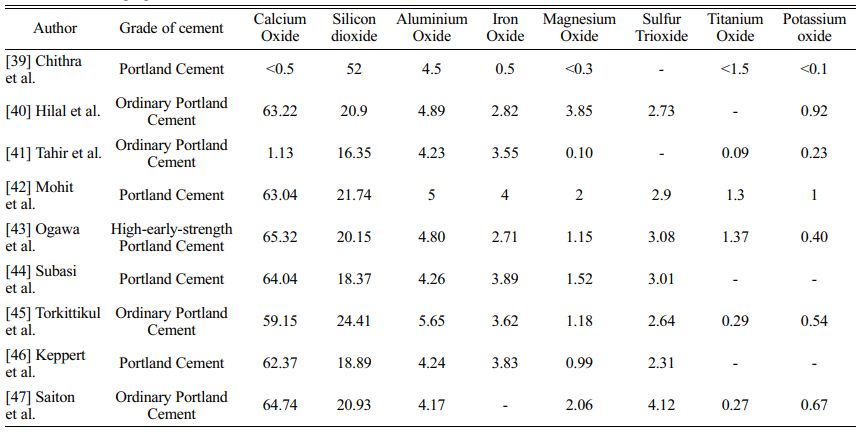
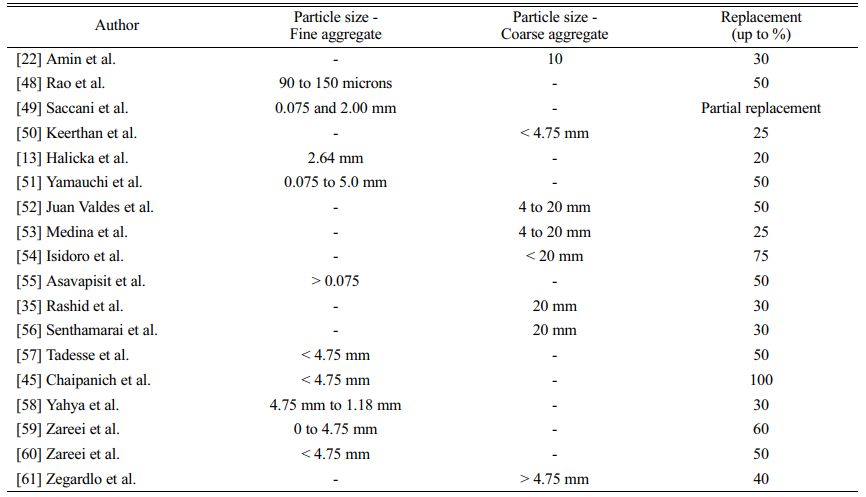
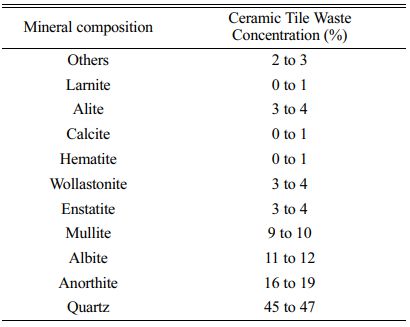
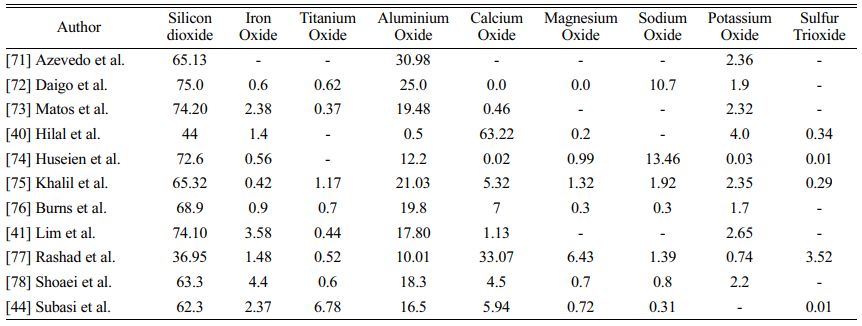
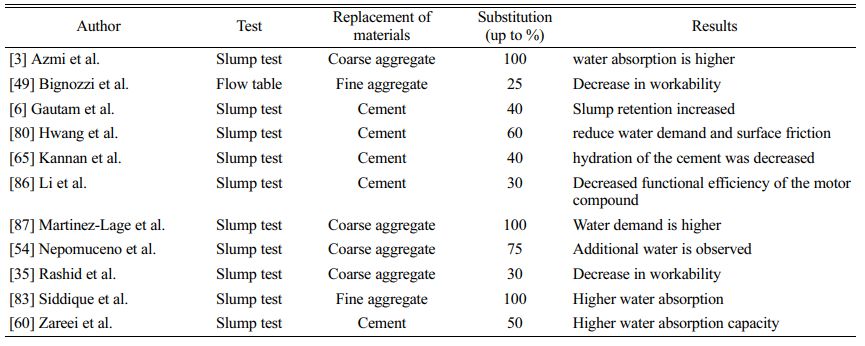



 Copyright 2019 International Orgranization for Ceramic Processing. All rights reserved.
Copyright 2019 International Orgranization for Ceramic Processing. All rights reserved.